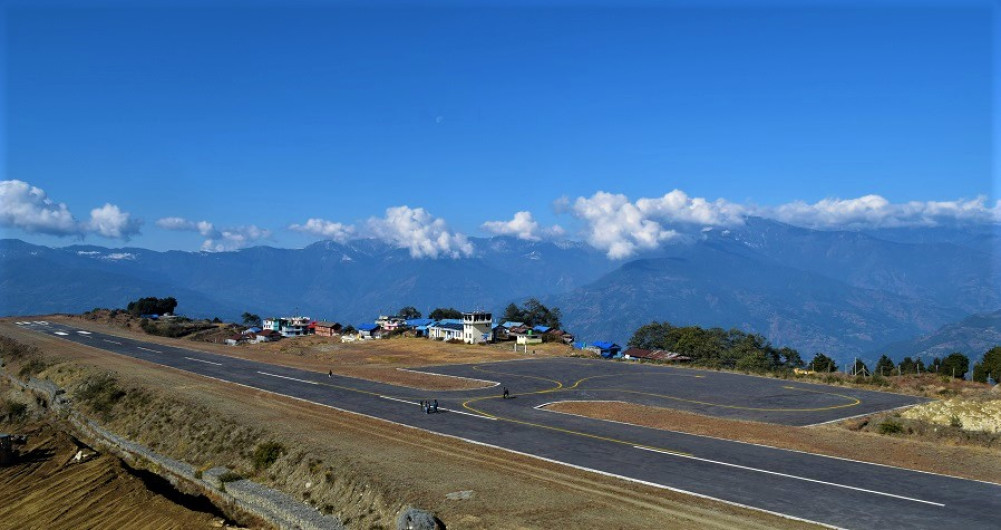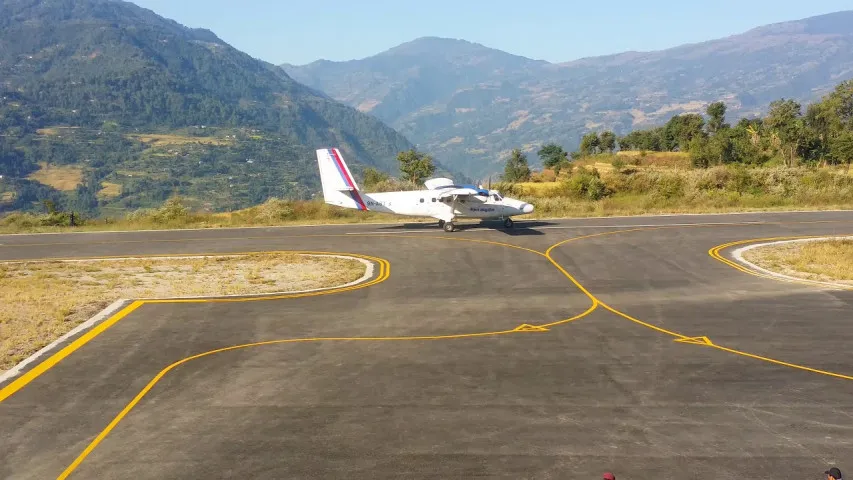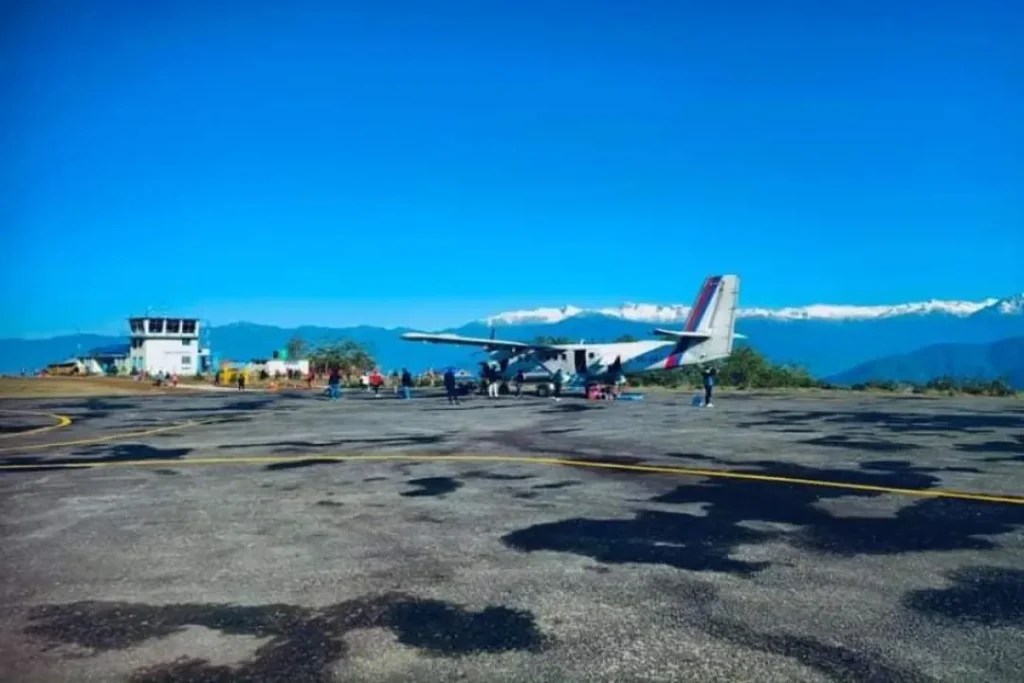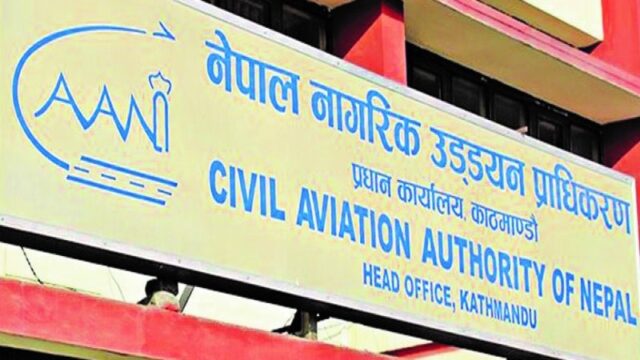Suketar Airport, the only air gateway to Nepal’s remote northeastern Taplejung district, has remained out of operation for over two weeks due to adverse weather conditions triggered by the monsoon. Not a single flight has been able to land or take off since June 13, leaving passengers stranded and highlighting the recurring challenge of reliable transportation in Nepal’s mountainous regions during the rainy season.
No Flights Since Mid-June Due to Monsoon Fog and Low Visibility
The Nepal Airlines Corporation (NAC) had resumed scheduled flights to Taplejung’s Suketar Airport in the second week of April, following a four-month-long suspension. The flights were expected to ease travel for locals and tourists heading to the eastern Himalayas, including the popular Kanchenjunga trekking region. However, since June 15, a total of four scheduled flights have been cancelled due to persistent low visibility and heavy fog, caused by seasonal monsoon patterns.
According to Narayan Kumar Karki, Station In-charge of NAC in Taplejung, the primary reason for the halted operations is poor weather. “Adverse weather is one of the reasons behind non-operation of the flights. We are compelled to stop the flights due to safety reasons,” he stated.

Passengers Inconvenienced as Scheduled Services Get Cancelled
NAC has been operating two flights per week on the Kathmandu-Taplejung route, specifically on Mondays and Fridays. However, these flights have been consistently grounded in recent weeks, leaving many passengers disappointed. The affected travelers include locals returning home, government officials on duty, and trekkers heading toward Kanchenjunga Conservation Area.
With the flights halted, passengers now face the harsh reality of long-distance road travel across rugged terrain, often taking two to three days to reach their destination. The mountainous roads, already difficult to navigate under normal conditions, become even more treacherous during the monsoon due to landslides and flooding.
Decline in Air Passenger Numbers Due to Unreliable Services
Due to the repeated cancellations and uncertainty surrounding flight schedules, the number of air passengers has significantly declined. Many are now choosing to avoid air travel altogether during the monsoon period, citing concerns over both reliability and safety. Local businesses that depend on tourism and trade have also expressed frustration, as delays in logistics and movement impact their operations.

Hoteliers and local guides report a drop in tourist flow since flights stopped. “We had bookings from domestic tourists coming to explore the region, but most have either postponed or cancelled their plans,” said a hotel owner in Phungling, Taplejung’s headquarters.
Recurring Seasonal Issue Raises Demand for Alternatives
This is not the first time Suketar Airport has faced prolonged closure during the rainy season. Every year, the monsoon rains disrupt flights for several weeks or even months. As a result, locals are now demanding long-term alternatives to unreliable air service.
Many have called for the improvement of road networks linking Taplejung to the rest of the country, particularly to Birtamod and Dharan, from where road transport to Kathmandu and other cities is possible. There is also growing demand for a more reliable and weather-resistant transportation solution, such as better aircraft suited for short take-off and landing (STOL) conditions and improved airport infrastructure, including navigation and weather-monitoring systems.

Airline Authorities Highlight Safety Concerns
NAC and Civil Aviation Authority of Nepal (CAAN) officials stress that passenger safety is their highest priority, especially when weather conditions do not meet the required visibility standards. Suketar Airport, situated at an altitude of over 2,400 meters, is particularly vulnerable to fog, strong winds, and cloud cover that reduce flight visibility.
“Safety protocols are strict for a reason. While we understand the inconvenience, it is essential to ensure the safety of passengers and crew,” said a senior CAAN official. He also acknowledged the need for investment in modern navigation aids and real-time weather tracking systems to improve flight reliability.
Tourism and Local Economy Take a Hit
Suketar Airport also serves as a critical link for Kanchenjunga region tourism, one of Nepal’s less explored trekking destinations. The current disruption has had a ripple effect on the tourism economy, affecting hotels, porters, guides, and local markets.

“The monsoon always affects us, but this year feels worse. We have lost more than half our expected bookings for June and July,” said Mingma Sherpa, a local trekking operator. Tourism entrepreneurs have urged the government to consider seasonal planning and scheduling flexibility to cope with weather-related disruptions.
Infrastructure Investment and Transport Diversification Needed
The ongoing flight disruptions at Suketar Airport serve as a reminder of the challenges Nepal faces in providing consistent and safe transport access to remote regions. While nature cannot be controlled, improved infrastructure, better aircraft suitability, and diversified transport planning can help mitigate the recurring problems faced by both locals and visitors.
Locals, business owners, and stakeholders are now urging the government and aviation authorities to act swiftly, not only to restore current services but also to implement long-term strategies for uninterrupted connectivity in all seasons.




